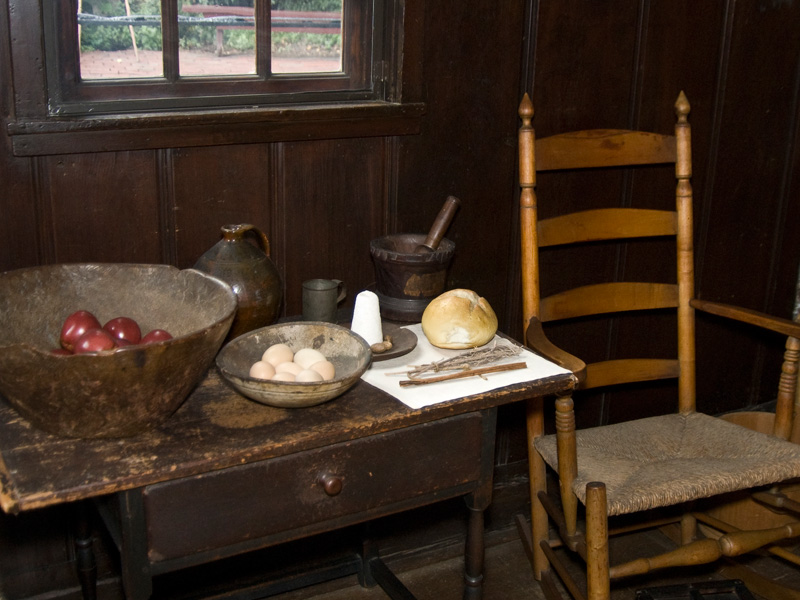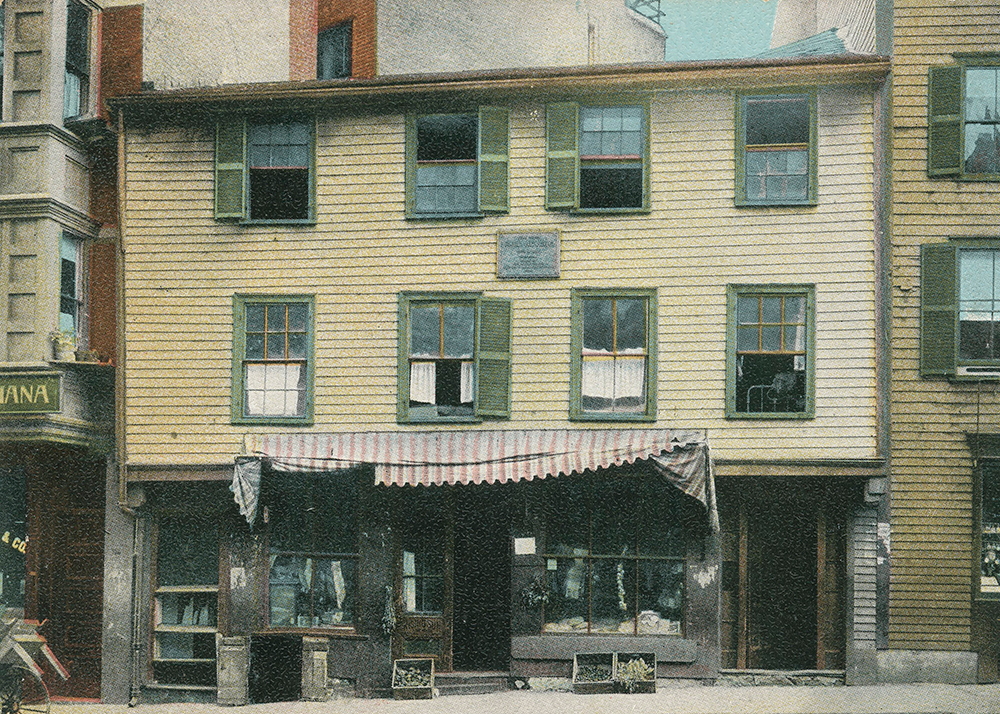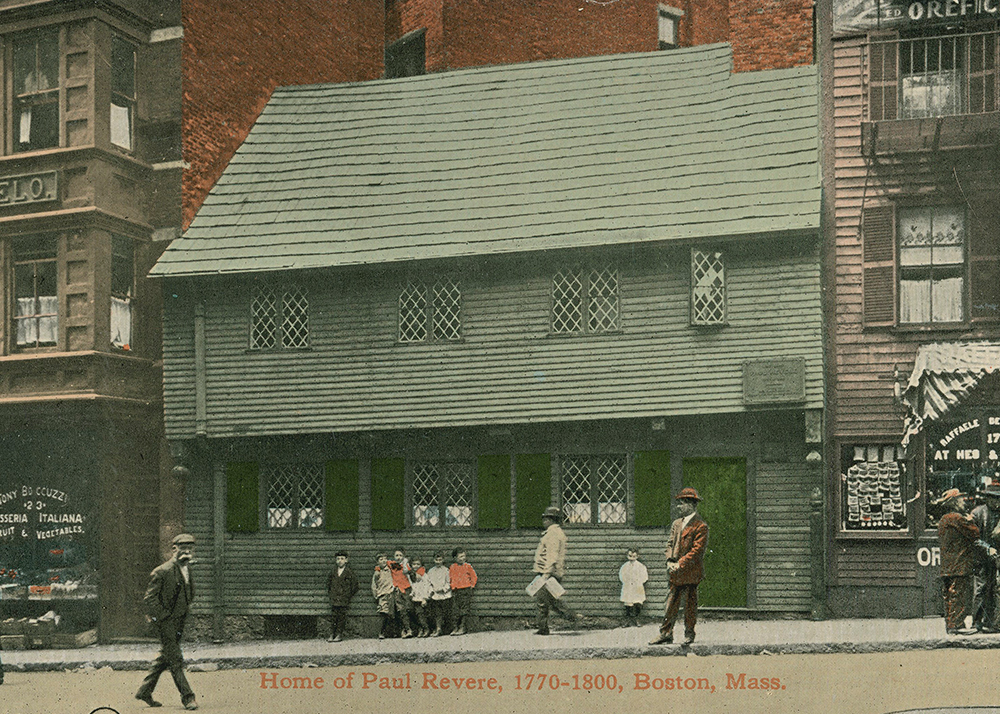

Paul Revere House
On the night of April 18, 1775, silversmith Paul Revere left his small wooden home in Boston’s North End and set out on a journey that ultimately made him a legend. Today that home is still standing at 19 North Square and has become a national historic landmark. It is downtown Boston’s oldest building and one of the few remaining 17th-century dwellings in a large urban area in the United States.
The home was built about 1680 on the site of the former parsonage of the Second Church of Boston. Increase Mather, the Minister of the Second Church, and his family (including his son, Cotton Mather) occupied this parsonage from 1670 until it was destroyed in the Great Fire of 1676. A large and fashionable new home was built at the same location about four years later.
The first owner of the new two-story townhouse with gabled garret and cellar on North Square was Robert Howard, a wealthy merchant. By the mid-18th century, the front roof line of the building had been raised, which enlarged the garret and replaced the gable or gables with a row of windows. Paul Revere purchased the home in 1770, moving his family here from their Clark’s Wharf residence. The former merchant’s dwelling proved ideal for Revere’s growing family, which in 1770 included his wife Sarah, five children, and his mother Deborah.
Paul Revere owned the home from 1770 to 1800, although he and his family may not have lived here for most, if not all, of the 1780s. After Revere sold the home in 1800, it soon became a sailor’s boarding house. By the second half of the 19th century, the house had become an immigrant tenement and the ground floor was remodeled for use as shops. At various times a candy store, cigar factory, Italian bank, and vegetable and fruit business could be found in the house. In 1902, Paul Revere’s great-grandson, John P. Reynolds Jr. purchased the building to ensure that it would not be demolished. Over the next few years, money was raised, and the Paul Revere Memorial Association formed to preserve and renovate the building.
Pauline Revere Thayer, a great-granddaughter of Paul Revere, and cousin of John Phillips Reynolds, Jr., was also a key figure in the early years of the Association and the restoration of the house. She lost her father, Paul Joseph Revere and her uncle Edward H.R. Revere in the Civil War. In April 1908, the Paul Revere House opened its doors to the public as one of the earliest historic house museums in the nation.


The dwelling as restored in 1907-1908, with its third story front extension removed, resembles its late-17th-century appearance. Ninety percent of the structure, two doors, three window frames, and portions of the flooring, foundation, inner wall material and raftering, are original. The heavy beams, large fireplaces, and absence of interior hallways recall colonial living arrangements. The ground floor includes a typical late-18th–century kitchen with cooking implements and a large Hall restored and furnished to look as it might have when the first owner lived here. Upstairs chambers contain period furnishings from Paul Revere’s era, including several pieces that belonged to the Revere family.
Click here to view a lecture about archeology done at the Revere House between 2011-2013.
Revere House tours are self-guided, complemented by illustrated text panels and museum interpreters. If you would like to download the text panels for reading off-site, click here.


